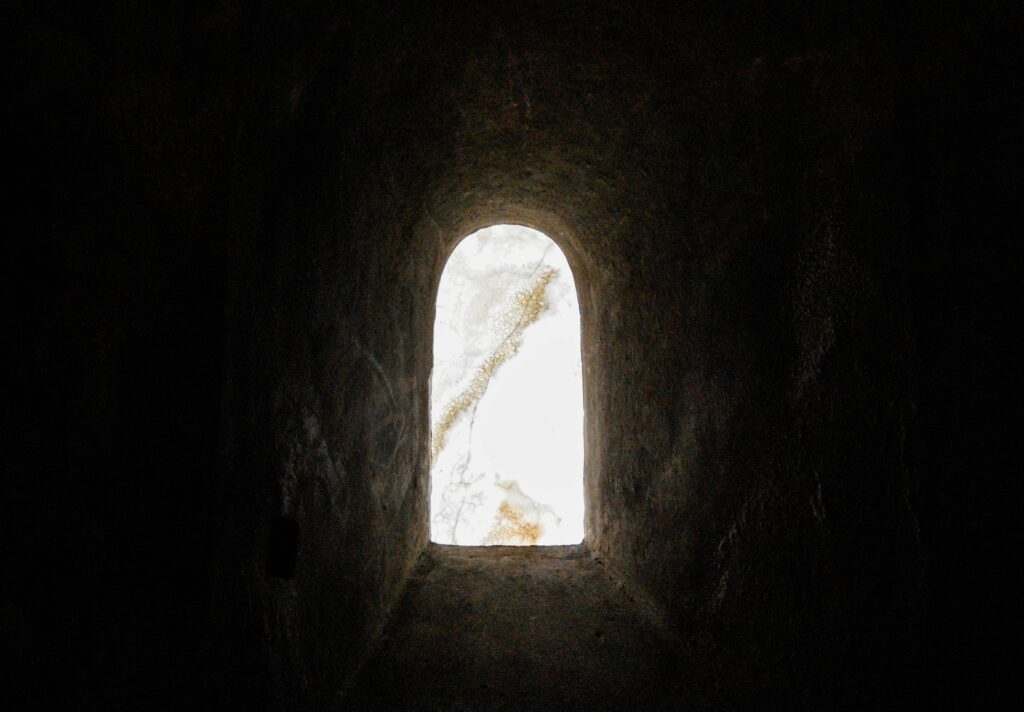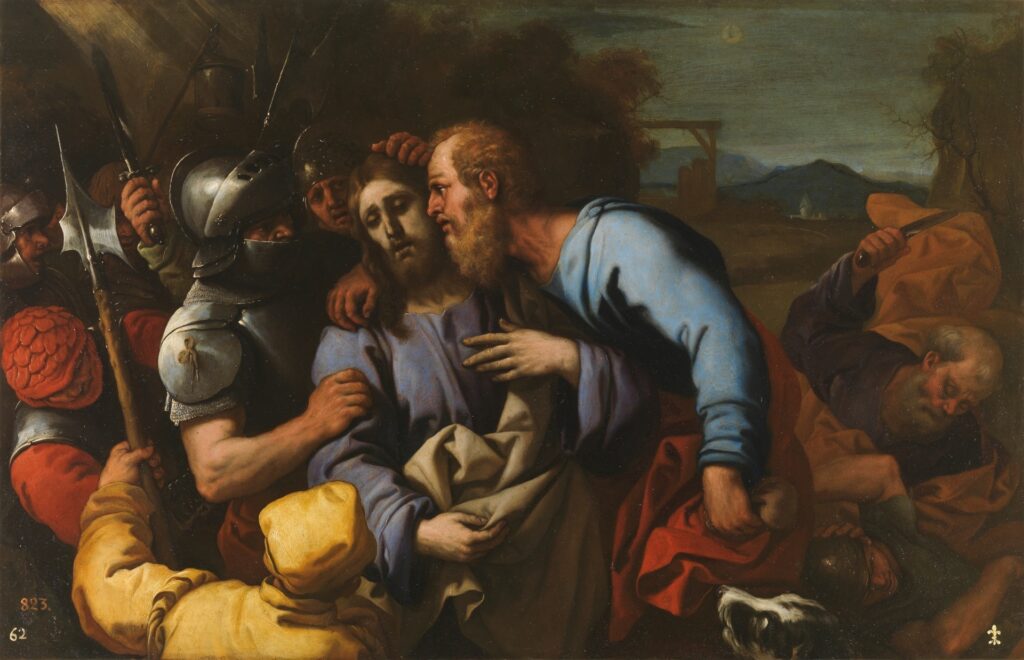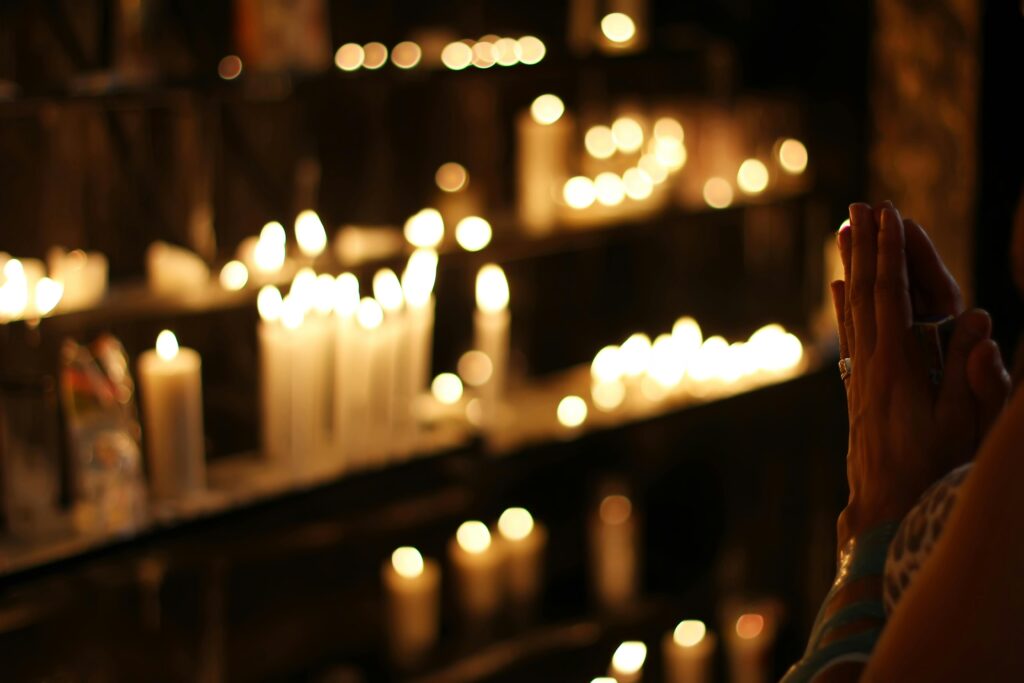Nessun Dorma!
Let no one sleep!
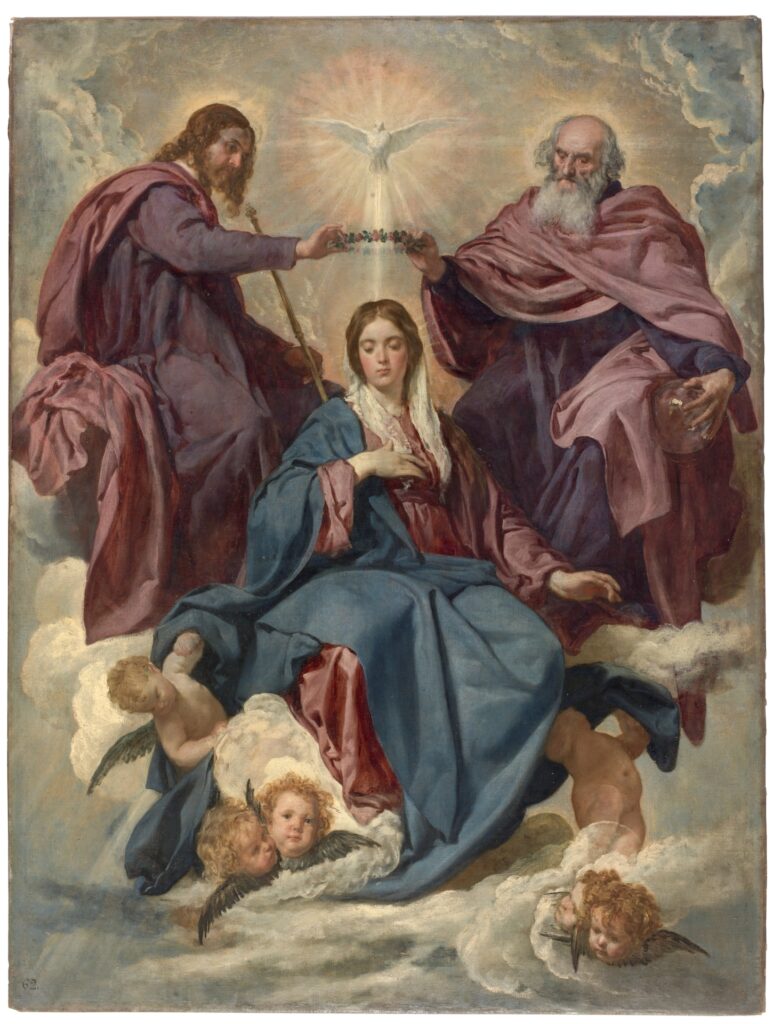
Thus begins the famous aria of the last act of Turandot, one of the most excellent operas by Giacomo Puccini.
That seemed to be the slogan for that summer night in 2018 that passed quickly like a beam of light emitted by an angel among the dark shadows of the Plaza de San Francisco in the Colombian city of Cali.
The prayer, Lord, is yours alone
On the afternoon of that Wednesday, August 1, walking through the capital of Valle del Cauca, I stopped at a stall selling old books. My eye fell on a small book titled “The Prophecies of Pope John XXIII. The history of humanity from 1935 to 2033” published by the Círculo de Lectores in 1976. I bought it.
In that year in the mid-70s, the sensational revelations of its author – an Italian journalist named Pier Carpi – revealed to the world the existence of supposed prophecies belonging to Angelo Roncalli, who took the name John XXIII when he was elected Supreme Pontiff of the Catholic Church, and which, supposedly, had been deposited within an initiatory society.
It seems that these prophecies were written in 1935, with the clear and poetic style that characterized the Good Pope, during Angelo Roncalli’s stay in Turkey, after a series of supernatural experiences that allowed him to enter – presumably – into an initiatory society of the Rosicrucians. According to Piere Carpi “the fragments that I was able to reproduce are twenty percent, more or less, of the full text of the prophecies made by Angelo Rocalli in the Temple of the Knight and the Rose /…/” (quote on page 196 of the book ). The texts were written in French and on sheets of blue paper.
Apparently, one night Roncalli had a series of visions. Not even the arrival of daylight made the experience seem unusual. At dawn, an old man accompanied him to a place inside which there was a wide pentagonal room. In the center of the room was a large pentagon-shaped cedar table and an open Bible. One glance was enough to know that it was open in the Epistle of Saint John, and that it narrated the mission of John the Baptist. These passages always had a peculiar fascination for Roncalli. John’s name had a special meaning for him.“He was a man sent from God.”
Carpi, who he claims was the first to disbelieve in the authenticity of such prophecies, was nonetheless attracted to the esoteric interpretation of the text. And after six years of uninterrupted study, he finally decided to publish the most obvious ones, since due to the complexity of some and the great personality to which they were linked, a rigorous examination and a logical reservation regarding the interpretations. The prophecies contain an extensive list of premonitions spanning from 1935 to 2033.
Some authors have compared the revealed prophecies of Pope John XXIII with the historical events that have occurred since 1935 and have verified their anticipatory nature.
I want to stop here especially on two of the prophecies that speak about the future and that are collected in the book:
The first reads like this: “And the entire world will be insubordinate against the game of the powerful, the secret brotherhood of the great that plotted the enslavement of the people. The few honest leaders will unite and the guilty will be defeated.”
The second has to do with the date on which – according to the aforementioned prophecies of John XXIII – the end of times (not the end of the world) will occur. According to the Good Pope, that date corresponds to “twenty centuries plus age of the savior”, that is, the year 2033.
However, reading Pier Carpi’s book one could interpret that the key to Angelo Roncalli’s prophecies is the following: although at many points catastrophes, wars and terrors fall upon humanity, words of consolation, resurrection and authentic human progress appear more frequently. The entire text is remarkably rich in hope, I would even say in certainty and confidence about the future of man, closely linked to his inseparable essence as a son of God and creature of the Creator.
Not in vain, John XXIII even said in the inaugural speech of the Second Vatican Council, on October 11, 1962, that many people, perhaps with good will, but without judgment or sanity, see in modern times nothing but prevarication and ruin, as if they had not learned from the past that is always the teacher of life. He personally, dissident from these “prophets of calamities” who always announce unfortunate and apocalyptic events, believed that divine Providence leads us towards a new order of human relations and that everything is arranged for the good of the Church.
This is not, then, a naive optimism of the Good Pope, but rather the faith by which we believe that all humanity is led by the Spirit of the Lord who fills the universe. In the midst of labor pains we can hope and work for a new birth.
Pier Carpi says at the end of the book the following: “I want to dedicate the last page of the prophecies, the last lines that I was allowed to copy, to the men and women of good will, to the humble, to the simple, to those who suffer. To the children and the elderly, whom Pope John loved most especially, whatever their faith, embracing them in a single, paternal embrace of love.”
These final lines are the following:
The prayer, Lord, is yours alone,
because only yours is the voice of the people
when they are reborn to the afterlife,
eyes exhausted and last breath.
Nothing written is worth what it is worth.
what was said and remembered with love
and transmitted to the sweat of the earth
for the voices that whisper prayers:
dawn, afternoon and night prayers.
How great is the land that you have sown,
and how solemn the prayer he exhales
in summer mists and winter mists
for the eye that contemplates them from afar.
You have given a son to every man
and to each man you have given a loaf
and the prayer is renewed day by day
when the bread is broken and the son dies.
The prayer Lord, is only yours alone,
because only yours is the voice in the world,
that of the lamb, that of the tree, that of the man.
That of everything that can be touched in it.
Every time preserves your memory,
because no step has ever been taken in vain:
even the walker who ignores you
leaves behind him seeds of praise.
He who is silent has prayed or will pray
and you for the one who is silent you already prayed
the seventh day, the day of rest.
Every man already has his prayer,
which is laughter, crying, screaming and fury.
Life itself prays in the abyss
that you filled with loving dreams
by offering ourselves as the God of forgiveness.
The prayer, Lord, is yours alone.
Redeemer of the captives
My prayer had begun that Wednesday, August 1, 2018 in the Church of La Merced, in the oldest place in Santiago de Cali, one of the most beautiful colonial temples and one of the few buildings from that time that remains well preserved. .
Our Lady of Mercy was from the beginning consecrated as the Patroness of the city of Cali and a simple church was built in her honor.
The Cali Catholic faith has its main representation in this sacred place and for centuries it has witnessed men and women who cry out to God for favors and joyfully thank the gifts received. These very ancient, but beloved constructions are proof of the fervor of a people who have always looked towards Heaven, recognizing the greatness of the Creator.
In a backpack belonging to the Mercedarian missionaries, witnesses of the founding of Cali, the image of Our Lady of Mercy arrived in the city. Her feast day is celebrated on September 24.
According to history, this image of the Virgin is the patron saint of prisoners because among the priests who brought her to America there was an order of redemptive force for the captives and as is known, the mission of the Mother of God is to organize the people to the conquest of souls by force of love, truth and repentance.
In this way, the Spiritual Motherhood of the Virgin Mary is made explicit in three ways: Mary is an Advocate because she intercedes for us, she defends us from the harassment of evil and dangers. Mary is Mediatrix in the sense that every grace that comes to us from heaven has a Marian seal, even if she is not seen. In the case of Mary as Coredemptrix, we want to make explicit that all grace that comes to us from Christ comes to us from Mary’s son.
Tu es Petrus, pasce oves meas
The Metropolitan Cathedral of Saint Peter the Apostle is open at mid-afternoon for anyone who wants to enter. That’s why, that Wednesday in August, I approached her. On its main door there is a bronze bas-relief commissioned by Monsignor Rodas from the Antioquia sculptor William Echevarría. It represents the birth of the Catholic Church in the mission entrusted by Jesus to Saint Peter the Apostle.
Posed in a semicircular arch with archivolts and a tympanum with ecclesiastical heraldry, an inscription is read with the phrases “Tu es Petrus” (“You are Peter”. Matthew 16:18) and “pasces oves meas” (“feed my sheep” . John 21).
Upon entering the Cathedral, I was struck by the presence of three bells on the wall of the right side nave. They have their history. However, I don’t know why, I remembered three prophetic letters written in 1974 by Saint Josemaría – the founder of Opus Dei – and which some have called the “Three Bells”. Precisely, a few days before, a priest friend had allowed me to read them.
At the other end, in the left nave, I saw a magnificent image of Our Lady of Mount Carmel.
The Cathedral has a chapel on the left dedicated to Our Lady of the Miraculous Medal. The marble representation of the Virgin dressed in white, with the fingers of her hands half open from where brilliant luminous rays come out and descend towards the earth, is a beautiful image that houses the monstrance with the Blessed Sacrament perpetually exposed in the Cathedral for the adoration of the loyals. There is Jesus the Eucharist alive and present, looking and letting himself be looked at by all those who want to find him in his heart. At the back of the chapel, a painting representing the Virgin and Jesus among angels. Above, in a stained glass window, Pope Pius XII, the predecessor of Pope John XXIII.
It was in that chapel where that afternoon I received absolution from a Mexican priest, a Xaverian missionary, in the sacrament of reconciliation and forgiveness. It was after confessing all my sins with deep pain in my heart, but at the same time, feeling deep gratitude for all the good that Jesus had done for me throughout my life. Because of the way the priest gave me absolution, Padre Pio of Pieltrecina, that great holy confessor, came to mind. I have also subsequently seen that August 1st was the festival of Saint Alphonsus Mary Liguori, bishop, doctor of the Church and patron saint of confessors.
In line to also receive said sacrament of forgiveness – in which the greatness of the Lord’s mercy is manifested – I was able to see for the first time the mysterious protagonist of this story. He was young, he carried a backpack on his back and in his hands a bottle that contained at least two liters of water. He seemed like someone wandering, passing through, fleeting. He had a certain homeless image.
At 6:00 p.m. I attended the celebration of the Eucharist. There was a considerable influx of faithful despite it being a weekday and I noticed the great devotion with which the attendees followed the Holy Mass. The celebrant, a tall, black and good-looking priest, gave a homily very appropriate for what had to happen next. At a moment when I closed my eyes, I heard loudly and with some authority some words that seemed addressed to me: Let no one sleep!… Nessun dorma!
At the end of the celebration, the devout people approached the priest to receive the blessing of the religious objects from him. I also approached with my olive wood rosary that I always carry with me. The priest sprinkled us generously with holy water. I was soaked. Beside me, the mysterious character received the blessing on his person and also on his water bottle. I thought: that takes two liters of holy water!
Outside the cathedral the universal flood began. Lightning and thunder could be heard. The storm was impressive. People left the building with umbrellas towards their homes and closed the main door of the Cathedral. Right at the frontispiece of the entrance, and in order not to go out and get wet, only the mysterious character and I were left.
Do not be afraid!
Curiously, the first words we exchanged were to comment on the impressive storm that was falling on the Universal Church.
The names of the two current Popes arose who, according to the frontispiece of the door where we were taking refuge, had to “feed their sheep” in the midst of so many wolves, most of them dressed as lambs. I quoted Pope Emeritus Benedict XVI who had had to resign from his ministry and also Pope Francis who currently occupies the Holy See as bishop of Rome. Both in their capacity as successors of Saint Peter in the primacy of the Catholic Church.
Given my fear of the howling of the wolves, the mysterious character repeated to me several times: “What are you afraid of? Do not be afraid! “Both Popes are instruments of the Lord, inspired and guided by the Holy Spirit.”And I thought, God knows best!
As if he were well informed about the ins and outs of the matter, my interlocutor told me the following: “In these prophetic times, Benedict and Francis lay the stones to found a spiritually renewed Church. Each one fulfills his mission. Certainly, they are very different missions, but they follow the plan that God has for each of them. Just as he has it for each of us, since our Father wants us to be happy and achieve eternal life.”
The words of my interlocutor reminded me, for a moment, that I (I no “me”) had acquired that same afternoon on the prophecies of Pope John XXIII, the Pontiff who promoted the Second Vatican Council. I was very curious to read the last pages that reached the year 2033, coinciding with the End Times.
The young homeless man invited me to leave our temporary shelter under the frontispiece of the main door of the Saint Peter’s Cathedral and start walking under the already clear and starry sky of Cali. He carried his backpack with all his belongings and in his hands he continued hugging the bottle with the two liters of water that had recently been blessed by the generous priest.
The rain had stopped and he wanted to continue the conversation.
He confessed to me that he had occasionally been left without his belongings due to a robbery the day before. He had to contact a family member or friend outside the city to resolve his precarious situation. I told him if I could help him with anything. At no time did he ask me for money.
That afternoon something strange had happened to him. He told me that, in fact, he was heading towards the nearby Church of Saint Francis when a mysterious force grabbed him by the arm and led him firmly to the Saint Peter’s Cathedral.
I looked at him with some perplexity when he told me that the Archangel Saint Gabriel “used to move him in the missions he carried out.” That’s when I asked him: And what is that mission? He responded: “Give advice to people who come across me every day.” The image of a lighthouse came to mind.
The etymology of the name Gabriel is not exact. It is known that its origin is Hebrew, and that its result is the union of two roots: Gabr-i-El. It is unknown whether the root gabr– comes from gabar (strength) or geber (man). The term He always refers to God. Therefore, the meaning of the name Gabriel could well be “the strength of God” or the “man of God.”
Gabriel is a biblical name, since along with Michael and Raphael, he is one of the three archangels whose mission is to bring God’s message to man.
Gabriel appears twice in the Old Testament sent by God to the prophet Daniel to help him interpret the meaning of a vision and predict the arrival of the Messiah. In the New Testament he is present in two important birth announcements: he appears to Zechariah to announce the birth of John the Baptist and later – and this is considered his most important mission – to the Virgin Mary with the announcement of the birth of Christ.
Archangel Saint Gabriel is, therefore, considered a messenger who makes us grow in spiritual life, revealing the plans and purposes that God has for us.
As we walked through the streets near St. Peter’s Cathedral towards St. Francis Square, I continued to insist on my concern for the fate of the current Pope and worried about whether he would even become a martyr. The response was forceful: “the Church, like Jesus Christ, must undergo her passion, death and resurrection. Christ passed through all these stages first, as Head of the Mystical Body, and now it is the turn of the faithful Church”.
And he added: “it is true that perhaps there could be a very convulsive conclave in the future, and that a German candidate for the Papacy would emerge, not at all convenient for the Church of Christ.”At that moment I thought that in the Catholic Church there were up to 41 antipopes who had occupied the Holy See as bishops of Rome.
Later, I also remembered a prophetic story from 1970 given by Pope Emeritus Benedict XVI when he was still Cardinal Ratzinger.
His words were these:
With this we have arrived at our today and the reflection on tomorrow. The future of the Church can come and will come today only from the strength of those who have deep roots and live from the pure fullness of their faith. The future will not come from those who only give recipes. It will not come from those who only adapt to the current moment. It will not come from those who only criticize others and take themselves as an infallible measure. Nor will it come from those who choose only the most comfortable path, from those who avoid the passion of faith and declare false and outdated, tyranny and legalism, everything that is demanding for human beings, which causes pain and forces them to renounce itself.
Let us put it positively: the future of the Church, also on this occasion, as always, will be marked again with the seal of the saints. And, therefore, by human beings who perceive more than the phrases that are precisely modern. For those who can see more than others, because their life covers broader spaces.
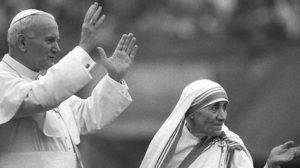 The gratuitousness that liberates people is achieved only in the patience of small daily renunciations of oneself. In this daily passion, the only one that allows the human being to experience how many different ways his own self binds him, in this daily passion and only in it, the human being opens up little by little. He only sees to the extent that he has lived and suffered. If today we can barely perceive God, it is because it is very easy for us to avoid ourselves and flee from the depth of our existence, anesthetized by any comfort. Thus, the deepest part of us remains unexplored. If it is true that one can only see well with the heart, how blind we all are!
The gratuitousness that liberates people is achieved only in the patience of small daily renunciations of oneself. In this daily passion, the only one that allows the human being to experience how many different ways his own self binds him, in this daily passion and only in it, the human being opens up little by little. He only sees to the extent that he has lived and suffered. If today we can barely perceive God, it is because it is very easy for us to avoid ourselves and flee from the depth of our existence, anesthetized by any comfort. Thus, the deepest part of us remains unexplored. If it is true that one can only see well with the heart, how blind we all are!
What does this mean for our question? It means that the great words of those who prophesy to us a Church without God and without faith are vain words. We do not need a Church that celebrates the cult of action in political “prayers.” It is completely superfluous and will therefore disappear by itself. The Church of Jesus Christ will remain, the Church that believes in the God who has become human and who promises us life beyond death. In the same way, the priest who is only a social official can be replaced by psychotherapists and other specialists. But the priest will still be necessary, who is not a specialist, who does not remain on the sidelines when he advises in the exercise of his ministry, but who in the name of God makes himself available to others and gives himself to them in their sadness, their joys, their hope and their anguish.
Let’s go one step further. Also on this occasion, from today’s crisis, a Church will emerge tomorrow that will have lost much. It will become small, it will have to start all over again. It will no longer be able to fill many of the buildings built in a more favorable situation. He will lose followers, and with them many of his privileges in society. It will be presented, in a much more intense way than until now, as the community of free will, which can only be accessed through a decision. As a small community, it will demand much more strongly the initiative of each of its members.
Certainly, he will also learn about new ministerial forms and will ordain priests from proven Christians who continue to exercise their profession: in many smaller communities and in homogeneous social groups, pastoral care will normally be exercised in this way. Along with these forms, the priest dedicated entirely to the exercise of the ministry as until now will continue to be indispensable. But in these changes that can be assumed, the Church will find again and with all determination what is essential for it, what has always been its center: faith in the Trinitarian God, in Jesus Christ, the Son of God made man , the help of the Spirit that will last until the end. The Church will once again recognize faith and prayer as its true center and will once again experience the sacraments as a celebration and not as a problem of liturgical structure.
It will be an internalized Church, which does not pine for its political mandate and does not flirt with the left or the right. It will be very difficult for you. Indeed, the process of crystallization and clarification will also cost you a lot of precious strength. It will make it poor, it will turn it into a Church of the little ones. The process will be even more difficult because both sectarian narrow-mindedness and emboldened voluntariness will have to be eliminated. It can be anticipated that all this will take time. The process will be long and laborious, just as the path that led from false progressivism was also very long, on the eve of the French revolution – when it was also fashionable among bishops to ridicule dogmas and perhaps even imply that neither Even the existence of God was by no means certain – until the renewal of the 19th century.
But after the test of these divisions, a great force will emerge from an internalized and simplified Church, because human beings will be unspeakably lonely in a fully planned world. They will experience, when God has totally disappeared for them, their absolute and horrible poverty. And then they will discover the small community of believers as something totally new. As an important hope for them, as an answer they have always groped for.
It seems certain to me that very difficult times await the Church. Her real crisis has barely begun yet. You have to expect strong shocks. But I am also totally sure of what will remain in the end: not the Church of political worship, which already failed in Gobel, but the Church of faith. Certainly, she will no longer be the dominant force in society to the extent that she was until recently. But it will flourish again and will become visible to human beings as the homeland that gives them life and hope beyond death.”
(Radio talk published in Glaube und Zukunft, Kösel-Verlag, Munich 1970; Faith and Future, Desclée de Brouwer, Bilbao 2007).
At that moment I thought that locking oneself in the temporal is for the ministers of the Church a terrible temptation and a fearful subterfuge. It is risking abandoning the essential task of the Church. It is the risk of invading the necessary autonomy of temporal tasks, as the Second Vatican Council itself had already said.
Yet this seems to be how the boat of the Church often sails. The disciples humanly do what they can until the coming of Our Lord Jesus Christ, who is the authentic Savior. He speaks to us today as well as in the time of the apostles and tells us: “Do not be afraid, it is I” (Mk 6, 45-52).
Fiat, Let it be done!
We finally arrived at the Plaza de San Francisco. At that time, the place really seemed very dangerous to me. The people wandering in front of us were, like lost souls, real zombies. I remember a cadaverous woman who approached us and, with a truly diabolical look, aggressively uttered expressions that were totally incomprehensible to me.
However, despite all those characters that were happening in front of us, the feeling I had during those hours of particular revelation was one of total confidence and tranquility. The bottle of holy water that my mysterious companion displayed before those fleeting specters must also have its effects.
“The mantle of the Virgin protects you,” the voice of the angel told me in the mouth of that young man.“Do not worry! Trust.”
At that moment I imagined the dark night that enveloped us as if it were the starry blue mantle of the Virgin of Guadalupe. Mexico was present in the conversation, as was Colombia, Poland, and Spain, “countries with great devotion to the Blessed Virgin Mary and that have suffered and will suffer a lot for that cause.”
The archangel Saint Gabriel at the Annunciation had received from Mary the “Fiat”, that is, “let it be done to me according to Your Word”.Beautiful words that had allowed the Redeemer to begin the work of his Salvation.
That absolute trust and that “Fiat” to God was what the one sent on his mission was also demanding of me that night.
The mysterious character made me understand that “the best lesson of simplicity, humility and trust in Jesus is the one we receive from the school of Mary, because she is Mother of God and our Mother. In these moments, the Holy Spirit inspires the hearts of men of good will so that we imitate that humility and simplicity of Mary. That is the true path that helps us to clothe ourselves in her son, Our Lord Jesus Christ, to Christify ourselves to give the best version of ourselves, to follow Him, love Him and fully trust Him.”
Although he also put me on alert with the following words: “many will silence Jesus Christ as the Son of God, second Person of the Holy Trinity and will present him from a new Christology, as a new “Christ” very similar to the New Age vision that breaks the unity of the divine with the human by a pagan notion of deified humanity. This vision separates Christ from Jesus, depersonalizes Christ and relativizes the Incarnation.In this new Christology, the divine is now called the “Cosmic Christ”, that is, the Spirit recognizable in all religions. For this erroneous perspective, Jesus is a mere man who shares the divine Spirit with others. Christ is the “Christ Consciousness.” Faced with this vision of Jesus, it is important to reaffirm the Christian vision that addresses Christ with the expression Our Lord Jesus Christ.”
Finally, regarding the Blessed Virgin, he added: “In her simple humanity Mary was preserved by the Holy Trinity from sin and was never even tempted by Satan as Jesus was in the desert.”
“Satan, in his arrogance, wanted to tempt his antagonist, Jesus, without noticing that Mary opened with her “Fiat” the doors of the redemption of the human race. Therefore, it is deserving that the Church solemnly recognizes its co-redeemer role in the history of Salvation.
Perhaps that is why, I thought, the Warning that the Blessed Virgin announces to us in Garabandal has been closely associated with the moment when a Pope proclaims the dogma of the Co-Redemption of Mary.
This fifth Marian dogma of the Co-Redemption of the Blessed Virgin is currently being awaited and promoted by a sector of the Church that sees Mary as a necessary sign to achieve the unity so desired throughout the Church and, furthermore, as an extraordinary means to achieve the Thank you in these times of tribulation that are coming. However, there is another important sector of the Church that opposes the proclamation of this dogma, a situation that clearly reveals the same internal struggle that exists within the Catholic Church.
At dawn… Hope!
Already at the first dawn of Thursday, August 2, 2018, the feast of Our Lady of the Angels, with the bright rays of the sun unfolding through the streets of the city, the angelic missionary told me the following: “Lucifer only can make his own the proud and neverthe humple and pure of heart as the Blessed Virgin Mary was.”
“It is important to seal oneself in these times and consecrate oneself to our Mother,” my companion who had been a light in the darkness that night came to tell me.“In this way, we can be like a lighthouse for others. It is essential to put on the weapons of light and cast away the works of darkness, since… the night is far spent, and the day is near” (Rome 13, 11-12).
I understood with these words that our vocation is to be and live like a light on in the middle of a dark place.
The mysterious young man finally told me that on his path of conversion, he had many times felt his calves burning as if they had flames of fire. At that moment I didn’t give importance to that comment. Later, I understood that it was one of the many signals he had received during those hours to “connect the dots.”
Upon arriving in Barcelona, intuitively, I went to a bookshelf in my house to consult a book about angels that a friend had brought me from Italy a few years ago. I quickly understood the signal that that man on mission in the city of Cali had wanted to give me.
Randomly opening the book, an illustration of the painting painted in 1850 by Dante Gabriel Rossetti entitled “Ecce Ancilla Domini” (or “The Annunciation”) and which is exhibited in the Tate Gallery in London, appeared.
In this painting, departing from a long iconographic tradition, the Archangel Saint Gabriel is represented without wings. However, what is very interesting is the detail of the flames on his calves.
Was this a clear sign of who had really carried out the announcement mission that night?
Over the next few weeks I followed the advice given to me by the messenger the Lord had placed in my path that night. I made the consecration to the Blessed Virgin Mary according to the method of Saint Louis Marie Grignion de Montfort. I made it in honor of the Virgin of Mercy, patron saint of Cali, that beautiful city in Colombia, garden of Mary.
After the 33rd day proposed by the aforementioned method of Grignion de Montfort, the first Marian festival that would appear on the calendar was, providentially, that of September 24, the festival of Nostre Senyora de la Mercè, patron saint of Barcelona – my hometown – which In turn, she has the title of Redeemer of the Captives in her capacity as Patroness of the Order of the Mercedarians, an ancient religious order founded in Barcelona in 1218 and which continues to fully develop its activity today.
Days later, I renewed my consecration before Our Lady of Carmen de Garabandal.
And Providence wanted to lead me, along with a team of holy men and women, to the exciting project of erecting a Home for the Mother of Jesus, the Incarnate Word, in San Sebastián de Garabandal.
In that place, a beautiful sanctuary project is underway for our Mother who wanted to manifest herself in the 60s of the last century in those beautiful landscapes of Cantabria (Spain).
The signs fit perfectly given that among my professional purposes and personal mission is the commitment to promote the stewardship of Creation and the preservation of the nature and dignity of the human condition, collaborating in this way, humbly and as a simple instrument, in the work of the Creator.
The signs were thus linking the messages of HOPE from Archangel Saint Gabriel in Cali with the announcement of the Great Warning as the supreme act of God’s MERCY prophesied by our Mother in Garabandal. Providentially, everything was connected!
Nessun was asleep!…Let no one sleep!
To know more:
VIDEO: Nessun Dorma, Turandot. Performed by Lucciano Pavarotti directed by Zubin Mehta (1980)
VIDEO: Domenico Bartolucci. I love you devote
DOCUMENT: Blog Chronological proposal. Analysis of the temporal clues contained in different prophecies about the end of times.
ARTICLE: “We are not going to stay inactive” by José Luís Aberasturi (08.01.20)
VIDEO: Garabandal: only God knows
VIDEO: Nessun Dorma, Cello
Related
 (EN)
(EN)
 (ES)
(ES)
 (IT)
(IT)


